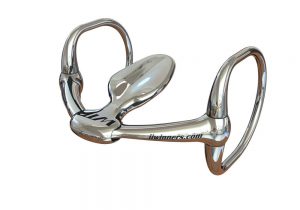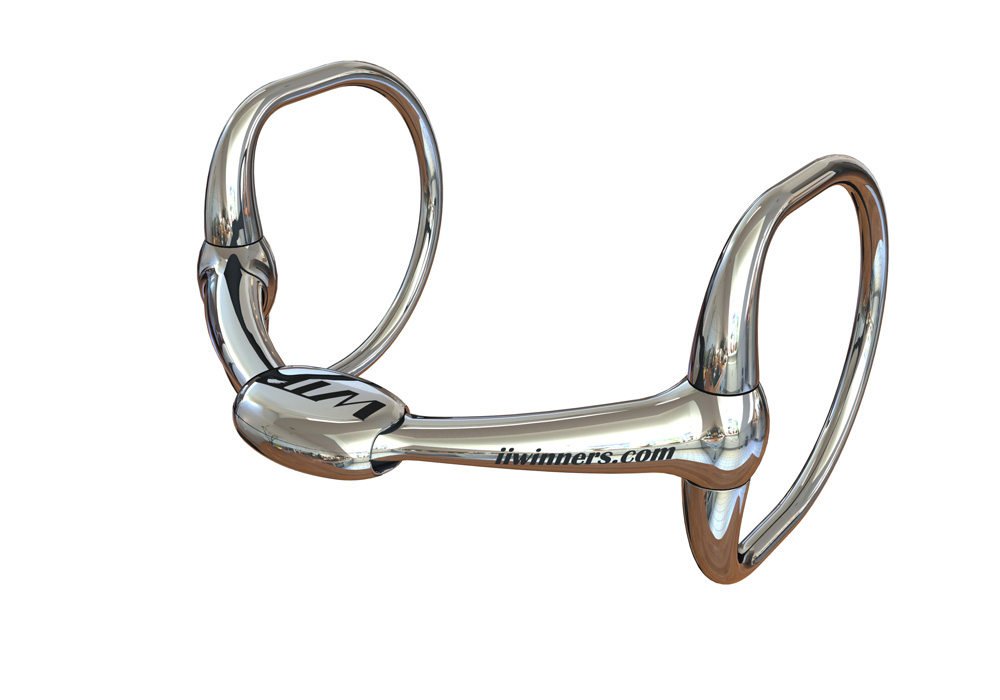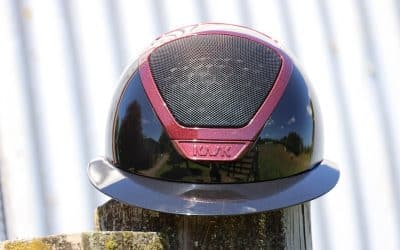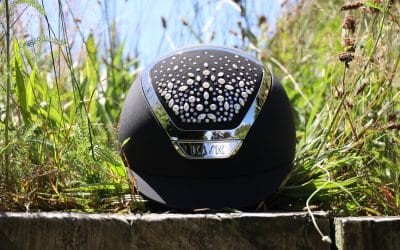Before buying Oakridge, I had never heard of WTP Bits but, they have since became a firm favourite in my books!
But what are they? How do they work and why do they suit so many horses? In this article we will answer these questions and hopefully by the end of it you’ll agree with me that these are truely unique bits!
What does WTP stand for?
WTP stands for Winning Tongue Plate, a bit invented by former jockey Adrian Morgante. There are two main mouth pieces, the Normal Plate (NP) and the Extended Plate (EP).
How do WTP Bits work?
The Winning Tongue Plate Bit is a specialised bit designed with the horse’s anatomy and comfort in mind.
Unlike traditional bits that exert pressure on the horse’s tongue, bars, and palate, the Winning Tongue Plate Bit features a unique plate that sits comfortably on the horse’s tongue, distributing pressure more evenly and reducing discomfort.
The plate does this by providing a broader surface area of contact compared to traditional bits.
By distributing pressure more evenly across the tongue, the Winning Tongue Plate Bit helps alleviate pinching and discomfort, promoting relaxation and acceptance of the bit.
How does the WTP Extended Tongue Plate work?

WTP DSEL Extended Plate
The EP was designed specifically for horses that continuously get their tongue over the bit, in particular race horses, as an alternative option to tongue tying.
Imagine going to the doctors and when they want to look at your throat they put the wooden paddle on your tongue, the EP preforms in a similar manner. It sits upon the tongue and prevents it from being able to pull back and over the bit.
It is important when using the EP to make sure the horses cheek pieces are in the correct position with preferably two wrinkles at the corners of the lips.
If the bit sits too low the horse can potentially get their tongue over which could cause injury to the underside of their tongue.
It is important to note that most horses will find the Normal Plate will solve most problems causing the horse to want to put it’s tongue over. We recommend starting here and progressing to the Extended Plate if needed.
What are the benefits of WTP Bits?
1. Enhanced Comfort: By minimising pressure points and reducing discomfort, the Winning Tongue Plate Bit promotes a more comfortable experience for the horse, encouraging relaxation and trust.
2. Improved Communication: With its innovative design, the Winning Tongue Plate Bit allows for clearer communication between horse and rider, facilitating subtle cues and aids for precise control and responsiveness.
3. Increased Performance: A comfortable horse is a happy horse, and a happy horse is more likely to perform at its best. The Winning Tongue Plate Bit can contribute to improved performance by promoting relaxation, suppleness, and willingness to work.
4. Versatility: The Winning Tongue Plate Bit is suitable for a wide range of disciplines and riding styles, making it a versatile option for riders across various equestrian disciplines.
Which WTP Bit Is Best For My Horse?
Choosing a bit for your horse can depend on a few different factors.
-What size do you need?
-What problem are you trying to solve? Is your horse fussy in the contact? Does it pull/lug on the bit or does it tend to suck back from the contact?
-Is turning an issue?
In terms of bit strength, the loose ring, DSEL (egg butt), Dee, Half Cheek and Full Cheek are at the more gentle end of the scale. These are great for horses who are fussy in the contact and need soft stability.
You then step to the Bit with Breaks (hanging cheek snaffle) which can be used with a fixed rein.
This is a great option for young riders whose ponies might be strong but the rider isn’t yet stable in their contact and position. The Bit with Breaks gives them stopping power while still being forgiving if they get left behind.
From here there are a variety of Gag options to give the rider the ability to control exceptionally strong horses.
Please note that most gags need to be ridded in either two pairs of reins or a forked rein and should only be used by experienced riders.
If turning is a problem then there are a few options. The Full Cheek is popular with breakers and trainers, the Half Cheek with harness racing and the Ring Bit for Thoroughbred racing.
What ever your problem, WTP Bits offer a modern solution for equestrians seeking to enhance their horse’s comfort, communication, and performance.
With its innovative design and focus on the horse’s well-being, this specialised bit is gaining popularity among riders looking to prioritise their horse’s comfort and optimise their riding experience.
Consider trying the Winning Tongue Plate Bit to unlock your horse’s full potential and enjoy a more harmonious partnership in the saddle.
If you would like to view the full range of WTP bits you can see the different options and what is currently in stock here.
You can learn more about how the WTP Bits work from this video from Bit Bank Australia.




